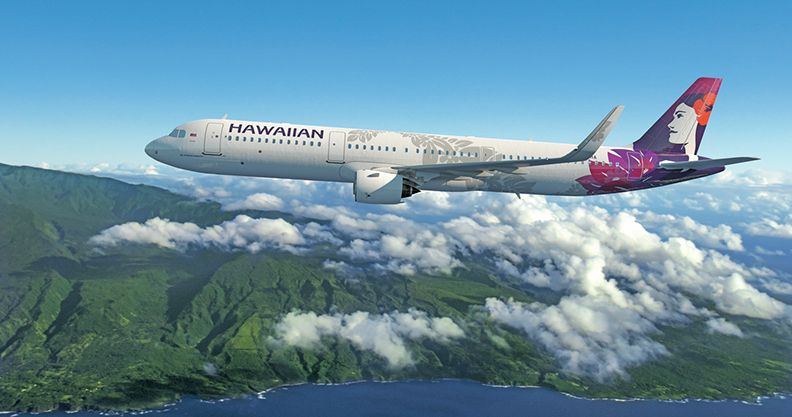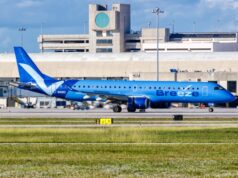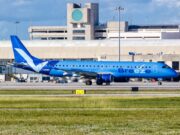
Hawaiian Airlines published its 2023 Corporate Kuleana (Responsibility) Report describing the carrier’s progress on Environmental, Social and Governance (ESG) priorities. In the past year, Hawaiʻi’s hometown airline has advanced its sustainability goals to achieve net-zero greenhouse gas (GHG) emissions by 2050, reduce single-use plastics from cabin service and offer more locally sourced food onboard.
Hawaiian’s decarbonization roadmap includes interim targets to lower GHG emissions and focuses heavily on replacing petroleum jet fuel with sustainable aviation fuel (SAF). Hawaiian is purchasing 50 million gallons of SAF from biofuel company Gevo, Inc., starting in 2029. Among its near-term commitments, the airline is seeking to decrease life-cycle jet fuel emissions per revenue ton mile by 45% by 2035 and replace 10% of conventional jet fuel with SAF by 2030.
“These targets, particularly those within the next decade, are a rallying cry for our organization to act urgently to address our carbon emissions,” Hawaiian Airlines President and CEO Peter Ingram said in the Corporate Kuleana Report’s welcome note. “We must also continue to partner with fuel producers and the airline industry, as well as states and the federal government to help accelerate SAF production and distribution at commercially viable prices.”
Hawaiian, which is working to phase out single-use plastics from in-flight service by 2029, carried 7% less single-use plastic per transpacific flight last year compared to 2021. It also increased locally produced food and beverage items served on flights departing from Hawaiʻi to 32% of its budget – up from 29% in 2021 and closer to its 2025 40% spending target.
As it continues to rebuild from the pandemic, Hawaiʻi’s largest and longest-serving airline last year welcomed 1,371 new teammates – approximately 20% of its year-end workforce of 7,108 people. None of its union contracts are currently amendable after Hawaiian successfully completed negotiations with all labor groups, providing significant improvements to wages. In planning for future recruiting needs, Hawaiian has established a number of school-to-career pipeline partnerships that encourage students to pursue aviation and technology careers, and broaden the carrier’s access to talent, especially in Hawaiʻi.
“Our commitment to diversity, inclusion and belonging remains an important driver of our recruitment and retention strategy. We continue to expand our searches for qualified veterans, women and other historically underrepresented groups,” Hawaiian noted in its report, which showed that 80% of employees identify as racially or ethnically diverse, and 48% as female. “In 2022, we were proud to once again lead major U.S. airlines in having the highest percentage of women pilots at more than 9.5%, well above the 5.8% 2021 global average.”
Hawaiian continues to play an outsized role supporting the economy of its home state. In 2022, it stimulated $10.2 billion in economic activity in Hawaiʻi and generated more than $600 million in Hawaiʻi state tax revenue, according to an economic impact study commissioned by Hawaiian.
For the second consecutive year, Hawaiian’s Corporate Kuleana Report includes reporting aligned with the Task Force on Climate-Related Disclosures (TCFD), in addition to Sustainability Accounting Standards Board (SASB) metrics it has provided since 2020.















































































































